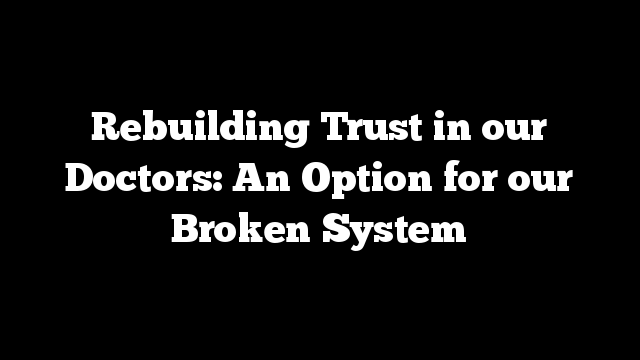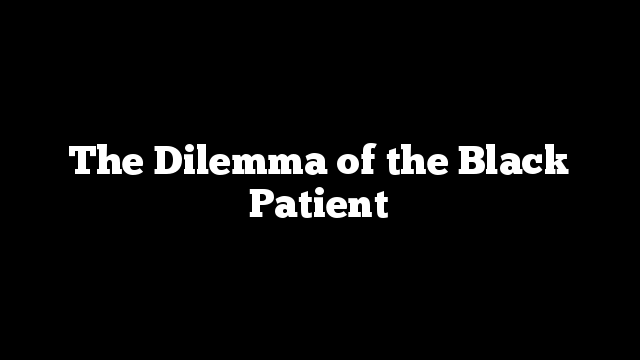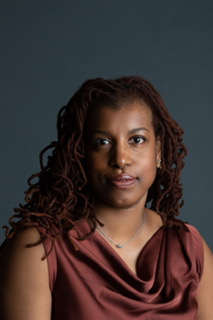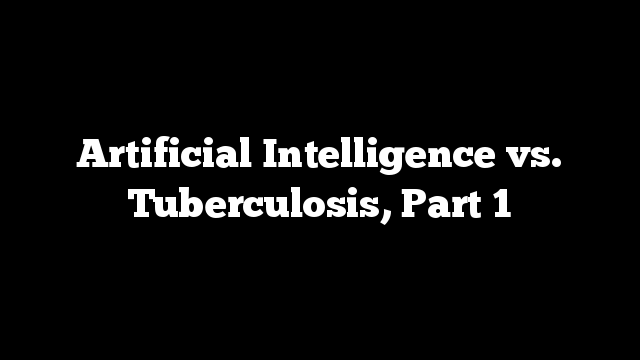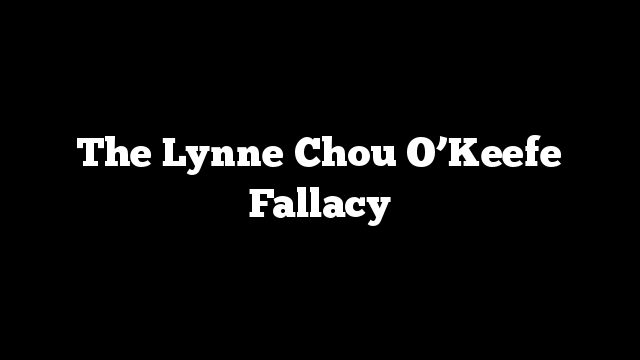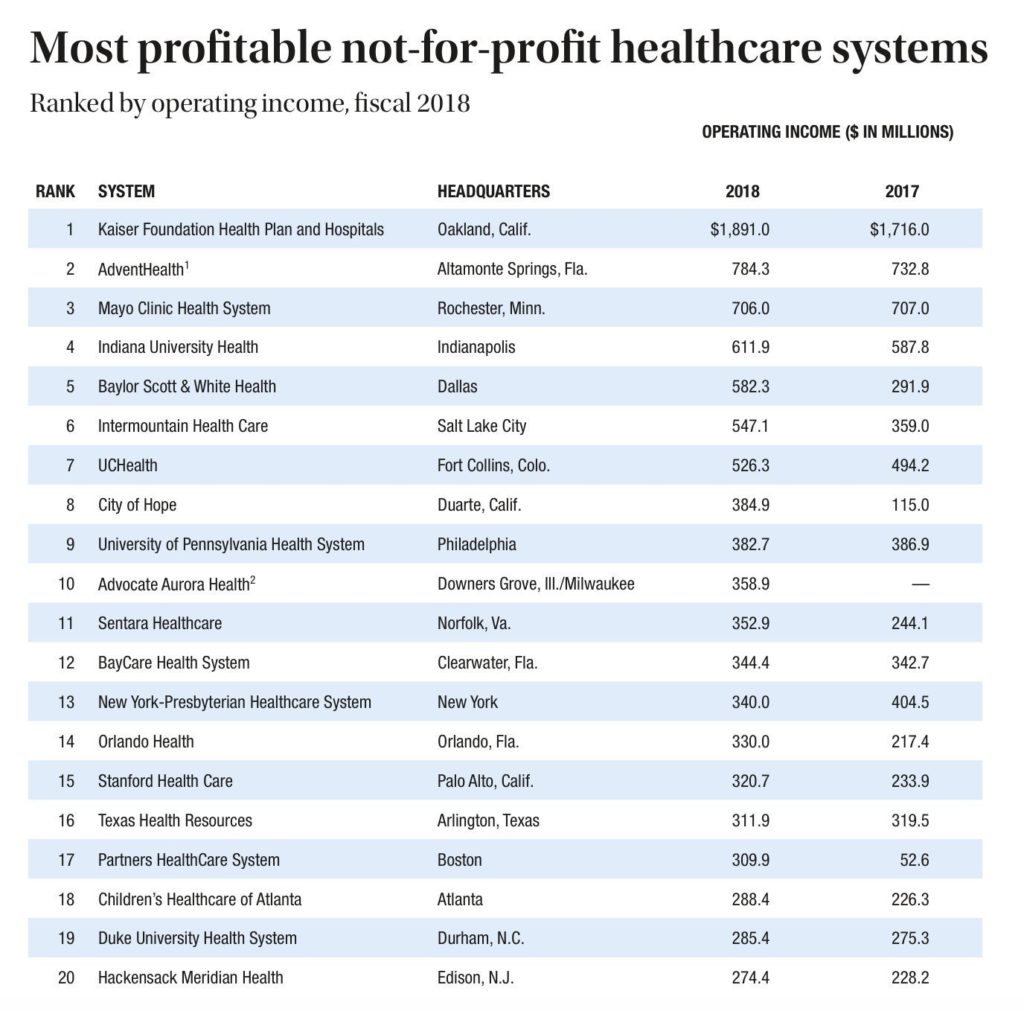By SAURABH JHA, MD
Slumdog TB
No one knows who gave Rahul Roy
tuberculosis. Roy’s charmed life as a successful trader involved traveling in his
Mercedes C class between his apartment on the plush Nepean Sea Road in South
Mumbai and offices in Bombay Stock Exchange. He cared little for Mumbai’s weather.
He seldom rolled down his car windows – his ambient atmosphere, optimized for
his comfort, rarely changed.
Historically TB, or
“consumption” as it was known, was a Bohemian malady; the chronic suffering produced
a rhapsody which produced fine art. TB was fashionable in Victorian Britain, in
part, because consumption, like aristocracy, was thought to be hereditary. Even
after Robert Koch discovered that the cause of TB was a rod-shaped bacterium –
Mycobacterium Tuberculosis (MTB), TB had a special status denied to its immoral
peer, Syphilis, and unaesthetic cousin, leprosy.
TB became egalitarian in the early twentieth
century but retained an aristocratic noblesse oblige. George Orwell may have
contracted TB when he voluntarily lived with miners in crowded squalor to
understand poverty. Unlike Orwell, Roy had no pretentions of solidarity with
poor people. For Roy, there was nothing heroic about getting TB. He was
embarrassed not because of TB’s infectivity; TB sanitariums are a thing of the
past. TB signaled social class decline. He believed rickshawallahs, not
traders, got TB.
“In India, many believe TB affects only
poor people, which is a dangerous misconception,” said Rhea Lobo – film maker
and TB survivor.
Tuberculosis is the new leprosy. The
stigma has consequences, not least that it’s difficult diagnosing a disease
that you don’t want diagnosed. TB, particularly extra-pulmonary TB, mimics many
diseases.
“TB can cause anything except
pregnancy,” quips Dr. Justy – a veteran chest physician. “If doctors don’t
routinely think about TB they’ll routinely miss TB.”
In Lobo, the myocobacteria
domiciled in the bones of her feet, giving her heel pain, which was variously
ascribed to bone bruise, bone cancer, and staphylococcal infection. Only when a
lost biopsy report resurfaced, and after receiving the wrong antibiotics, was TB
diagnosed, by which time the settlers had moved to her neck, creating multiple pockets
of pus. After multiple surgeries and a protracted course of antibiotics, she
was free of TB.
“If I revealed I had TB no one
would marry me, I was advised” laughed Lobo. “So, I made a documentary on TB
and started ‘Bolo Didi’ (speak sister), a support group for women with TB. Also,
I got married!”
Mycobacterium tuberculosis is an
astute colonialist which lets the body retain control of its affairs. The mycobacteria
arrive in droplets, legitimately, through the airways and settle in the breezy
climate of the upper lobes and superior segment of the lower lobes of the lungs.
If they sense weakness they attack, and if successful, cause primary TB.
Occasionally they so overpower the body that an avalanche of small, discrete
snowballs, called miliary TB, spread. More often, they live silently in calcified
lymph nodes as latent TB. When apt, they reappear, causing secondary TB. The
clues to their presence are calcified mediastinal nodes or a skin rash after
injection of mycobacterial protein.
MTB divides every 20 hours. In the
bacterial world that’s Monk-like libido. E. Coli, in comparison, divides every
20 minutes. Their sexual ennui makes them frustratingly difficult to culture.
Their tempered fecundity also means they don’t overwhelm their host with their
presence, permitting them to write fiction and live long enough to allow the
myocobacteria to jump ship.
TB has been around for a while. The
World Health Organization (WHO) wants TB eradicated but the myocobacteria have
no immediate plans for retirement. Deaths from TB are declining at a tortoise
pace of 2 % a year. TB affects 10 million and kills 1.6 million every year – it
is still the number one infectious cause of death.
The oldest disease’s nonchalance to
the medical juggernaut is not for the lack of a juggernaut effort. Mass
screening for TB using chest radiographs started before World War 2, and still
happens in Japan. The search became fatigued by the low detection of TB. The
challenge wasn’t just in looking for needles in haystacks, but getting to the
haystacks which, in developing countries, are dispersed like needles.
The battleground for TB eradication
is India, which has the highest burden of TB – a testament not just to its large
population. Because TB avoids epidemics, it never scares the crap out of people.
Its distribution and spread match society’s wealth distribution and
aspirations. And in that regard India is most propitious for its durability.
Few miles north of Nepean Sea Road is
Dharavi – Asia’s largest slum, made famous by the Oscar-winning film, Slumdog
Millionaire. From atop, Dharavi looks like thousand squashed coke cans beside
thousand crumpled cardboard boxes. On the ground, it’s a hot bed of economic
activity. No one wants to stay in Dharavi forever, its people want to become Bollywood
stars, or gangsters, or just very rich. Dharavi is a reservoir of hope.
Dharavi is a reservoir also of
active TB. In slums, which are full of houses packed like sardines in which
live people packed like sardines, where cholera spreads like wildfire and
wildfire spreads like cholera, myocobacteria travel much further. Familiarity
breeds TB. One person with active TB can infect nine – and none are any the wiser
of the infection because unlike cholera, which is wildfire, TB is a slow burn
and its symptoms are indistinguishable from the maladies of living in a slum.
Slum dwellers with active TB often
continue working – there’s no safety net in India to cushion the illness – and often
travel afar to work. They could be selling chai
and samosas outside the Bombay Stock
Exchange. With the habit of expectoration – in India, spitting on the streets
isn’t considered bad manners – sputum is aplenty, and mycobacteria-laden
droplets from Dharavi can easily reach Roy’s lungs. TB, the great leveler,
bridges India’s wealth divide. Mycobacteria unite Nepean Sea Road with Dharavi.
Rat in Matrix Algebra
The major challenges in fighting tuberculosis
are finding infected people and ensuring they take the treatment for the
prescribed duration, often several months. Both obstacles can wear each other–
if patients don’t take their treatment what’s the point finding TB? If TB can’t
be found what good is the treatment?
The two twists in the battle
against TB, drug resistant TB and concurrent TB and HIV, favor the
mycobacteria. But TB detection is making a resurgence with the reemergence of
the old warrior – the chest radiograph, which now has a new ally – artificial
intelligence (AI). Artificial Intelligence is chest radiograph’s Sancho Panza.
Ten miles north of Dharavi in slick
offices in Goregaon, Mumbai’s leafy suburb, data scientists training algorithms
to read chest radiographs are puzzled by AI’s leap in performance.
“The algorithm we developed,” says
Preetham Sreenivas incredulously, “has an AUC of 1 on the new set of
radiographs!”
AUC, or area under the receiver
operator characteristic curve, measures diagnostic accuracy. The two types of diagnostic
errors are false negatives – mistaking abnormal for normal, and false positives
– mistaking normal for abnormal. In general, fewer false negatives (FNs) means more
false positives (FPs); trade-off of errors. A higher AUC implies fewer “false”
errors, AUC of 1 is perfect accuracy; no false positives, no false negatives.
Chest radiograph are two-dimensional
images on which three dimensional structures, such as lungs, are collapsed and
which, like Houdini, hide stuff in plain sight. Pathology literally hides
behind normal structures. It’s nearly impossible for radiologists to have an
AUC of 1. Not even God knows what’s going on in certain parts of the lung, such
as the posterior segment of the left lower lobe.
Here, AI seemed better than God at
interpreting chest radiographs. But Sreenivas, who leads the chest radiograph team
in Qure.ai – a start-up in Mumbai which solves healthcare problems using
artificial intelligence, refused to open the champagne.
“Algorithms can’t jump from an AUC
of 0.84 to 1. It should be the other way round – their performance should drop when
they see data (radiographs) from a new hospital,” explains Sreenivas.
Algorithms mature in three stages.
First, training – data (x-rays),
labelled with ground truth, are fed to a deep neural network (the brain),
Labels, such as pleural effusion, pulmonary edema, pneumonia, or no abnormality,
teach AI. After seeing enough cases AI is ready for the second step, validation
– in which it is tested on different cases taken from the same source as the
training set – like same hospital. If AI performs respectably, it is ready for
the third stage – the test.
Training radiology residents is
like training AI. First, residents see cases knowing the answer. Then they see
cases on call from the institution they’re training at, without knowing the
answer. Finally, released into the world, they see cases from different
institutions and give an answer.
The test and training cases come
from different sources. The algorithm invariably performs worse on test than
training set because of “overfitting” – a phenomenon where the algorithm tries
hard fitting to the local culture. It thinks the rest of the world is exactly
like the place it trained, and can’t adapt to subtle differences in images
because of different manufacturers, different acquisition parameters, or acquisition
on different patient populations. To reduce overfitting, AI is regularly fed cases
from new institutions.
When AI’s performance on
radiographs from a new hospital mysteriously improved, Sreenivas smelt a rat.
“AI is matrix algebra. It’s not corrupt
like humans – it doesn’t cheat. The problem must
be the data,” Sreenivas pondered.
Birth of a company
“I wish I could say we founded this
company to fight TB,” says Pooja Rao, co-founder of Qure.ai, apologetically.
“But I’d be lying. The truth is that we saw in an international public health
problem a business case for AI.”
Qure.ai was founded by Prashant
Warier and Pooja Rao. After graduating from the Indian Institute of Technology
(IIT), Warier, a natural born mathematician, did his PhD from Georgia Tech. He
had no plans of returning to India, until he faced the immigration department’s
bureaucratic incompetence. Someone had tried entering the US illegally on his
wife’s stolen passport. The bureaucracy, unable to distinguish the robber from
the robbed, denied her a work visa. Warier reluctantly left the US.
In India, Warier founded a company which
used big data to find preferences of niche customers. His company was bought by
Fractal, a data analytic giant – the purchase motivated largely by the desire
to recruit Warier.
Warier wanted to develop an AI-enabled
solution for healthcare. In India, data-driven decisions are common in retail but
sparse in healthcare. In a move unusual in industry and uncommon even in
academia, Fractal granted him freedom to tinker, with no strings attached.
Qure.ai was incubated by Fractal.
Warier discovered Rao, a
physician-scientist and bioinformatician, on LinkedIn and invited her to lead
the research and development. Rao became a doctor to become a scientist because
she believed that deep knowledge of medicine helps join the dots in the biomedical
sciences. After her internship, she did a PhD at the Max Planck Institute in
Germany. For her thesis, she applied deep learning to predict Alzheimer’s
disease from RNA. Though frustrated by Alzheimer’s, which seemed uncannily
difficult to predict, she fell in love with deep learning.
Rao and Warier were initially
uncertain what their start-up should focus on. There were many applications of
AI in healthcare, such as genomic analysis, analysis of electronic medical records,
insurance claims data, Rao recalled two lessons from her PhD.
“Diseases such as Alzheimer’s
are heterogeneous, so the ground truth, the simple question – is there
Alzheimer’s – is messy. The most important thing I realized is that without the ground
truth AI is useless.”
Rao echoed the sentiments of Lady
Lovelace, the first computer programmer, from the nineteenth century. When
Lovelace saw the analytical engine, the first “algorithm”, invented by Charles
Babbage, she said: “The analytical
Engine has no pretensions whatever to originate anything. It
can do whatever we know how to order it to perform. It can
follow analysis; but it has no power of anticipating any analytical relations
or truths.”
The second lesson Rao learnt was
that the ground truth must be available immediately, not in the future – i.e.
AI must be trained on diseases of the present, not outcomes, which are nebulous
and take time to reveal. The immediacy of their answer, which must be now,
right away, reduced their choices to two – radiology and pathology. Pathology
had yet to be digitized en masse.
“The obvious choice for AI was radiology”,
revealed Warier.
Why “Qure” with a Q, not “Cure”
with a C, I asked. Was it a tribute to Arabic medicine?
“We’re not that erudite,” laughed
Warier. “The internet domain for ‘cure’ had already been taken.”
Qure.ai was founded in 2016 during peak
AI euphoria. In those days deep learning seemed magical to those who understood
it, and to those who didn’t. Geoffrey Hinton, deep learning’s titan, famously
predicted radiologists’ extinction – he advised that radiologists should stop
being trained because AI would interpret the images just as well.
Bioethicist and architect of
Obamacare, Ezekiel Emanuel, told radiologists that their profession faced an
existential threat from AI. UK’s health secretary, Jeremy Hunt, drunk on the
Silicon Valley cool aid, prophesized that algorithms will outperform general
practitioners. Venture capitalist, Vinod Khosla predicted modestly that
algorithms will replace 80 % of doctors.
Amidst the metastasizing hype,
Warier and Rao remained circumspect. Both understood AI’s limitations. Rao was
aware that radiologists hedged in their reports – which often made the ground
truth a coin toss. They concluded that AI would be an incremental technology.
AI would help radiologists become better radiologists.
“We were firing arrows in the dark.
Radiology is vast. We didn’t know where to start,” recalls Rao.
Had Qure.ai been funded by venture
capitalists, they’d have a deadline to have a product. But Fractal prescribed
no fixed timeline. This gave the founders an opportunity to explore radiology.
The exploration was instructive.
They spoke to several radiologists
to better understand radiology, find the profession’s pain points, see what
could be automated, and what might be better dealt by AI. The advice ranged
from the flippant to the esoteric. One radiologist recommended using AI to
quantify lung fibrosis in interstitial pulmonary fibrosis, another, knee
cartilage for precision anti-rheumatoid therapy. Qure.ai has a stockpile of
unused, highly niche, esoteric algorithms.
Every radiologist’s idea of
augmentation was unique. Importantly, few of their ideas comprised mainstream practice.
Augmentation seemed a way of expanding radiologist’s possibilities, rather than
dealing with radiology’s exigencies – no radiologist, for instance, suggested
that AI should look for TB on chest radiographs.
Augmentation doesn’t excite venture
capitalists as much as replacement, transformation, or disruption. And
augmentation didn’t excite Rao and Warier, either. When you have your skin in
the commercial game, relevance is the only currency.
“Working for start-ups is different
from being a scientist in an academic medical center. We do science, too. But
before we take a project, we think about the return of investment. Just because
an endeavor is academically challenging doesn’t mean that it’s commercially
useful. If product don’t sell, start-ups have to close shop,” said Rao.
The small size of start-ups means
they don’t have to run decisions through bulky corporate governance. It doesn’t
take weeks convening meetings through Doodle polls. Like free climbers who
aren’t encumbered by climbing equipment, they can reach their goal sooner. Because
a small start-up is nimble it can fail fast, fail without faltering, fail a few
time. But it can’t fail forever. Qure needed a product it could democratize. Then
an epiphany.
In World War 2, after allied
aircrafts sustained bullets in enemy fire, some returned to the airbase and
others crashed. Engineers wanted the aircrafts reinforced at their weakest
points to increase their chances of surviving enemy fire. A renowned
statistician of the time, Abraham Wald, analyzed the distribution of the
bullets and advised that reinforcements be placed where the plane hadn’t been
shot. Wald realized that the planes which didn’t return were likely shot at the
weakest points. On the planes which returned the bullets marked their strongest
point.
Warier and Rao realized that they
needed to think about scenarios where radiologists were absent, not where
radiologists were abundant. They had asked the wrong people the wrong question.
The imminent need wasn’t replacing or even augmenting radiologists, but in supplying
near-radiologist expertise where not a radiologist was in sight. The epiphany
changed their strategy.
“It’s funny – when I’m asked whether
I see AI replacing radiologists, I point out that in most of the rest of the
world there aren’t any radiologists to replace,” said Rao.
The choice of modality – chest
radiographs – followed logically because chest radiographs are the most commonly
ordered imaging test worldwide. They’re useful for a number of clinical
problems and seem deceptively easy to interpret. Their abundance also meant
that AI would have a large sample size to learn from.
“There just weren’t enough radiologists
to read the daily chest radiograph volume at Christian Medical College,
Vellore, where I worked. I can read chest x-rays because I’m a chest physician,
but reading radiographs takes away time I could be spending with my patients,
and I just couldn’t keep up with the volumes,” recalls Dr. Justy. Several
radiographs remained unread for several weeks, many hid life-threatening conditions
such as pneumothorax or lung cancer. The hospital was helpless – their budget
was constrained and as important as radiologists were, other physicians and
services were more important. Furthermore, even if they wanted they couldn’t
recruit radiologists because the supply of radiologists in India is small.
Justy believes AI can offer two
levels of service. For expert physicians like her, it can take away the normal
radiographs, leaving her to read the abnormal ones, which reduces the workload
because the majority of the radiographs are normal. For novice physicians, and
non-physicians, AI could provide an interpretation – diagnosis, or differential
diagnoses, or just point abnormalities on the radiograph.
The Qure.ai team imagined those
scenarios, too. First they needed the ingredients, the data, i.e. the chest
radiographs. But the start-up comprised only a few data scientists, none of
whom had any hospital affiliations.
“I was literally on the road for
two years asking hospitals for chest radiographs. I barely saw my family,”
recalls Warier. “Getting the hospitals to share data was the most difficult
part of building Qure.ai.”
Warier became a traveling salesman
and met with leadership of over hundred healthcare facilities of varying sizes,
resources, locations, and patient populations. He explained what Qure.ai wanted
to achieve and why they needed radiographs. There were long waits outside the
leadership office, last minute meeting cancellations, unanswered e-mails,
lukewarm receptions, and enthusiasm followed by silence. But he made progress,
and many places agreed to give him the chest radiographs. The data came with stipulations.
Some wanted to share revenue. Some wanted research collaborations. Some had
unrealistic demands such as share of the company. It was trial and error for
Warier, as he had done nothing of this nature before.
Actually it was Warier’s IIT alumni
network which opened doors. IITians (graduates of the Indian Institutes of
Technology) practically run India’s business, commerce, and healthcare. Heads
of private equity which funds corporate hospitals are often IITians, as are the
CEOs of these hospitals.
“Without my IIT alumni network, I
don’t think we could have pulled it off. Once an IITian introduces an IITian to
an IITian, it’s an unwritten rule that they must help,” said Warier.
Warier’s efforts paid. Qure has now
acquired over 2.5 million chest radiographs from over 100 sites for training,
validation and testing the chest radiograph algorithm.
“As a data scientist my ethos is
that there’s no such thing as ‘too much data.’ More the merrier,” smiled
Warier.
“The mobile phone reached many
parts of India before the landline could get there,” explains Warier.
“Similarly, AI will reach parts of India before radiologists.”
Soon, a few others, including
Srinivas, joined the team. Whilst the data scientists were educating AI, Rao
and Warier were figuring their customer base. It was evident that radiologists
would not be their customers. Radiologists didn’t need AI. Their customers were
those who needed radiologists but were prepared to settle for AI.
“The secret to commercialization in
healthcare is need, real need, not induced demand. But it’s tricky because the
neediest are least likely to generate revenues,” said Warier in a pragmatic
tone. Unless the product can be scaled at low marginal costs. An opportunity
for Qure.ai arose in the public health space – the detection of tuberculosis on
chest radiographs in the global fight against TB. It was an indication that
radiologists in developing worlds didn’t mind conceding – they had plenty on
their plates, already.
“It was serendipity,” recalls Rao.
“A consultant suggested that we use our algorithm to detect TB. We then met
people working in the TB space – advocates, activists, social workers,
physicians, and epidemiologists. We were inspired particularly by Dr. Madhu Pai,
Professor of Epidemiology at McGill University. His passion to eradicate TB
made us believe that the fight against TB was personal.”
Qure.ai started with four people.
Today 35 people work for it. They even have a person dedicated to regulatory
affairs. Rao remembers the early days. “We were lucky to have been supported by
Fractal. Had we been operating out of a garage, we might not have survived. Building
algorithms isn’t easy.”
Finding Tuberculosis
Hamlet’s modified opening soliloquy,
“TB or not TB, that is the question”, simplifies the dilemma facing TB detection,
which is a choice between fewer false positives and fewer false negatives.
Ideally, one wants neither. The treatment for tuberculosis – quadruple therapy
– exacts several month commitment. It’s not a walk in the park. Patients have
to be monitored to confirm they are treatment compliant, and though directly
observed therapy, medicine’s big brother, has become less intrusive, it still consumes
resources. Taking TB treatment when one doesn’t have TB is unfortunate. But not
taking TB treatment when one has TB can be tragic, and defeats the purpose of
detection, and perpetuates the reservoir of TB.
Hamlet’s soliloquy can be broken
into two parts – screening and confirmation. When screening for TB, “not TB is
the question”. The screening test must be sensitive –capable of finding TB in
those with TB, i.e. have a high negative predictive value (NPV), so that when
it says “no TB” – we’re (nearly) certain the person doesn’t have TB.
Those positive on screening tests
comprise two groups – true positives (TB) and false positives (not TB). We don’t
want antibiotics frivolously given, so the soliloquy reverses; it is now “TB,
that is the question.” The confirmatory test must be specific, highly capable
of finding “not TB” in those without TB, i.e. have a high positive predictive
value (PPV), so that when it says “TB” – we’re (nearly) certain that the person
has TB. Confirmatory tests should not be used to screen, and vice versa.
Tuberculosis can be inferred on
chest radiographs or myocobacteria TB can be seen on microscopy. Seeing is
believing and seeing the bacteria by microscopy was once the highest level of
proof of infection. In one method, slide containing sputum is stained with carbol
fuchsin, rendering it red. MTB retains its glow even after the slide is washed
with acid alcohol, a property responsible for its other name – acid fast
bacilli.
Sputum microscopy, once heavily endorsed
by the WHO for the detection of TB, is cheap but complicated. The sputum
specimen must contain sputum, not saliva, which is easily mistaken for sputum. Patients
have to be taught how to bring up the sputum from deep inside their chest. The
best time to collect sputum is early morning, so the collection needs
discipline, which means that the yield of sputum depends on the motivation of
the patient. Inspiring patients to provide sputum is hard because even those
who regularly cough phlegm can find its sight displeasing.
Which is to say nothing about the
analysis part, which requires attention to detail. It’s easier seeing mycobacteria
when they’re abundant. Sputum microscopy is best at detecting the most
infectious of the most active of the active TB sufferers. Its accuracy depends
on the spectrum of disease. If you see MTB, the patient has TB. If you don’t
see MTB, the patient could still have TB. Sputum microscopy, alone, is too
insensitive and cumbersome for mass screening – yet, in many parts of the
world, that’s all they have.
The gold standard test for TB – the
unfailing truth that the patient has TB, independent of the spectrum of disease
– is culture of mycobacteria, which was deemed impractical because on the Löwenstein–Jensen
medium, the agar made specially for MTB, it took six weeks to grow MTB, which is
too long for treatment decisions. Culture has made a comeback, in order to
detect drug resistant mycobacteria. On newer media, such as MGIT, the mycobacteria
grow much faster.
The detection of TB was
revolutionized by molecular diagnostics, notably the nucleic acid amplification
test, also known as GeneXpert MTB/ RIF, shortened to Xpert, which simultaneously
detects mycobacterial DNA and assesses whether the mycobacteria are resistant
to rifampicin – one of the mainline anti-tuberculosis drugs.
Xpert boasts a specificity of 98 %,
and with a sensitivity of 90 % it is nearly gold standard material, or at least
good enough for confirmation of TB. It gives an answer in 2 hours – a
dramatically reduced turnaround time compared to agar. Xpert can detect 131
colony-forming units of MTB per ml of specimen – which is a marked improvement
from microscopy, where there should be 10, 000 colony-forming units of MTB per
ml of specimen for reliable detection. However, Xpert can’t be used on
everyone, not just because its sensitivity isn’t high enough – 90 % is a B
plus, and for screening we need an A plus sensitivity. But also its price,
which ranges from $10 – $20 per cartridge, and is too expensive for mass
screening in developing countries.
This brings us back to the veteran
warrior, the chest radiograph, which has a long history. Shortly after Wilhelm
Röntgen’s discovery, x-rays were used to see the lungs, the lungs were a
natural choice because there was natural contrast between the air, through
which the rays passed, and the bones, which stopped the rays. Pathology in the
lungs stopped the rays, too – so the ‘stopping of rays’ became a marker for
lung disease, chief of which was tuberculosis.
X-rays were soon conscripted to the
battlefield in the Great War to locate bullets in wounded soldiers, making them
war heroes. But it was the writer, Thomas Mann, who elevated the radiograph to
literary fame in Magic Mountain – a story about a TB sanitarium. The chest
radiograph and tuberculosis became intertwined in people’s imagination. By
World War 2, chest radiographs were used for national TB screening in the US.
The findings of TB on chest
radiographs include consolidation (whiteness), big lymph nodes in the
mediastinum, cavitation (destruction of lung), nodules, shrunken lung, and
pleural effusion. These findings, though sensitive for TB – if the chest radiograph
is normal, active TB is practically excluded, aren’t terribly specific, as they’re
shared by other diseases, such as sarcoid.
Chest radiographs became popular
with immigration authorities in Britain and Australia to screen for TB in
immigrants from high TB burden countries at the port of entry. But the WHO remained
unimpressed by chest radiographs, preferring sputum analysis instead. The inter-
and intra-observer variation in the interpretation of the radiograph didn’t
inspire confidence. Radiologists would often disagree with each other, and
sometimes disagree with themselves. WHO had other concerns.
“One reason that the WHO is weary
of chest radiographs is that they fear that if radiographs alone are used for
decision making, TB will be overtreated. This is common practice in the private
medical sector in India,” explains Professor Madhu Pai.
Nonetheless, Pai advocates that
radiographs triage for TB, to select patients for Xpert, which is cost
effective because radiographs, presently, are cheaper than molecular tests. Using Xpert only on patients with abnormal
chest radiographs would increase its diagnostic yield – i.e. percentage of
cases which test positive. Chest radiograph’s high sensitivity compliments
Xpert’s high specificity. But this combination isn’t 100 % – nothing in
diagnostic medicine is. The highly infective endobronchial TB can’t be seen on
chest radiograph, because the mycobacteria never make it to the lungs, and
remain stranded in the airway.
“Symptoms such as cough are even more
non-specific than chest radiographs for TB. Cough means shit in New Delhi,
because of the air pollution which gives everyone a cough,” explains Pai,
basically emphasizing that neither the chest radiograph nor clinical acumen,
can be removed from the diagnostic pathway for TB.
A test can’t be judged just by its
AUC. How likely people – doctors and patients – are to adopt a test is also
important and here the radiograph outshines sputum microscopy, because despite
its limitations, well known to radiologists, radiographs still carry a certain
aura, particularly in India. In the Bollywood movie, Anand, an oncologist played by Amitabh Bachchan diagnosed terminal
cancer by glancing at the patient’s radiograph for couple of seconds. Not CT,
not PET, but a humble old radiograph. Bollywood has set a very high bar for
Artificial Intelligence.
Saurabh Jha (aka @RogueRad) is a contributing editor for THCB. This is part 1 of a two-part story.
The post Artificial Intelligence vs. Tuberculosis, Part 1 appeared first on The Health Care Blog.








